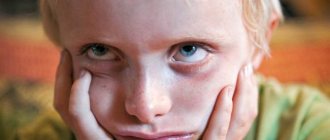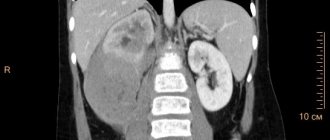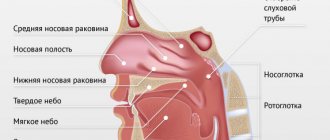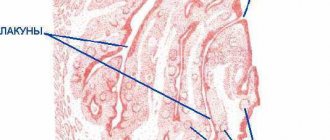Newspapers and news releases ten years ago reported: On May 5, 2004, Antonina Presnyakova, an employee of the Novosibirsk State Scientific Center for Virology and Biotechnology “Vector”, conducted regular experiments with guinea pigs infected with the Ebola virus. While working, despite precautions, an accident occurred - she apparently accidentally pricked herself with a syringe needle and contracted a serious infection. The woman was hospitalized, but attempts to save her were in vain - Antonina Presnyakova died on May 19. Thanks to the measures taken by the center's staff (including a special burial procedure), the infection did not spread - the incident in 2004 turned out to be the only one.
Incidents involving laboratory contamination of the Ebola virus have occurred in other countries, notably in the UK in 1976 and Cote d'Ivoire in 1994. In both cases, the infected survived - in the latter, probably due to the fact that medical care for the patient was provided in Switzerland. There were also “small” outbreaks of Ebola fever among the population, mainly in Central Africa: for example, in Sudan and Zaire in 1976 (602 sick, 431 deaths), in the same Zaire in 1995 (315, 250), in Uganda in 2000–2001 (425, 224), etc. The current outbreak occurred in West Africa and is the largest, since the number of sick and dead is already in the thousands, and the fever threatens to spread to other continents.
Since then, a lot of water has passed under the bridge, and this terrible story, which once rustled across the pages of newspapers, has been forgotten, overgrown with the weeds of other news, so now it’s time to wonder where Ebola went. And when in March 2014 television reported about a fever that had broken out somewhere in Africa with the characteristic equatorial name Ebola, few people remembered that this five-letter word had already claimed the life of one of our compatriots.
Briefly about the dangers of the Ebola virus
The disease in question belongs to the group of hemorrhagic fevers. They are caused by viruses of different families. The Ebola virus, like its related Marburg virus, belongs to the filovirus family (an order of RNA viruses), which differs from others in that it infects primates. Hemorrhagic fevers are characterized by the development of thrombohemorrhagic syndrome - a severe form of impaired blood clotting and microcirculation, resulting in the development of tissue necrosis and general intoxication. Moreover, in the case of Ebola fever, the development of this syndrome is rapid.
The gates of infection are mucous membranes and microtraumas of the skin. Transmission of the Ebola virus occurs through contact with the secretions and blood of a patient, contaminated tissues. The UN Ebola Emergency Response Mission has clarified that the fever is not an airborne disease.
The incubation period, according to various sources, varies from two to four days to two to three weeks. It is clear that during this time, an infected person who has not yet felt the symptoms of the disease can move from one African country to another, fly to Europe, America or Asia, becoming a source of spread of the virus in a new place. So the length of the incubation period is one of the key dangers that sanitary services in various countries have to take into account.
Another formidable danger is a very severe, one might say, painful course of the disease.
Symptoms of Ebola fever:
- sudden rise in temperature
- chills
- feeling very weak
- pain in the head, throat and muscles
These symptoms include a dry cough, stabbing pain in the chest, diarrhea, often vomiting, hemorrhagic rash, impaired liver and kidney function due to problems with blood microcirculation.
Severe dehydration develops. The course of Ebola fever is also characterized by hemorrhages, detachment of the skin and mucous membranes of various organs. A sign of unfavorable development of the disease is the development of numerous internal and external bleeding and multiple organ failure, leading to death. A patient in this condition can literally bleed, ooze blood and other secretions, and this poses a great danger of infection for medical personnel and others around.
Consequences and complications
Frequent bleeding with the development of hemorrhagic syndrome, acute cardiovascular and adrenal insufficiency, and cerebral edema . Less commonly, acute liver failure . During pregnancy - spontaneous abortion. The addition of a bacterial infection with the development of bacterial sepsis and infectious-septic shock , multiple organ failure .
Death by a healer
Those sick with Ebola should be placed in a special isolation room. Even close relatives are not allowed to contact them. By the way, for some time after death, the tissues of the deceased are also a source of infection. Consequently, traditional ceremonies of farewell to the deceased, burying him in the ground without a special procedure in this case are very dangerous - there are many examples of people becoming infected at funerals.
This poses serious problems in combating the spread of the virus. It is difficult for people to give up their traditions, the desire to help, to alleviate suffering, and to express feelings for the deceased. While tracking the sources of infection, WHO identified the following story that contributed to the spread of Ebola.
In the town of Kailahun in Sierra Leone, there lived a well-known and revered traditional healer for many years. When Ebola broke out, sick people came to her for help and ended up infecting her. When she died, hundreds of people who had once been cured by her came to honor her memory and took part in the burial ceremony, which was carried out without any precautions.
Local health authorities later determined that up to 365 Ebola deaths could ultimately be linked to participation in this ritual. So, a healer during her lifetime, posthumously she became the source of death for many people. According to WHO, up to 60% of Ebola cases are associated with traditional burial practices.
Diet
Dietary nutrition is prescribed that corresponds to Table No. 4 according to Pevzner, which provides a diet containing the physiological norm of protein with a limitation of fats and carbohydrates. All products that enhance the processes of rotting/fermentation in the intestines and the secretion of the digestive organs are excluded: liquid, semi-liquid and mashed dishes, steamed/boiled in water are indicated. The power mode is fractional. During the recovery period, a diet with a high content of animal protein is indicated.
Yambuku, or Where Ebola Comes From
A little history of Ebola disease. The origins of the discovery of the Ebola virus were the blood of a Belgian nun. In 1976, while in Yambuku, a remote village in northern Zaire (now the Democratic Republic of the Congo), she fell ill with a mysterious fever that doctors could not diagnose and died. The thermos with a sample of her blood was transported to a research center in Antwerp. Tests for yellow and other fevers were negative. Then the center’s specialists isolated the virus from the sample and inoculated it into experimental animals, which after a few days began to die one after another.
An image obtained using an electron microscope showed the similarity of the isolated virus with the Marburg virus, already known by that time. At the same time, it was established that this, although related, is a different virus. When the question arose about its name, scientists decided not to name it - by analogy with the Marburg virus - “in honor” of the locality (Yambuku) where it was identified, so as not to “stigmatize it forever.” For this we chose a small river flowing nearby. So the deadly virus, which gives - in different outbreaks - from 50% to 90% mortality, received the name Ebola.
To date, five types of ebolavirus have been identified: four of them cause disease in humans, while infection with the fifth is asymptomatic. There were several Ebola outbreaks from 1976 to 2013, but none claimed more than three hundred lives or spread to multiple countries. The current scourge, caused by the most widespread, Zairean type of ebolavirus, has a particularly menacing approach. The number of victims and casualties is not in the hundreds, but in the thousands, and may soon reach tens of thousands. According to WHO data, as of October 22, 2014, the total number of cases reached 9,936 people.
The fever has already spread to several African countries. It is especially rampant in Liberia, Guinea and Sierra Leone. Cases of the disease have also been recorded in the DRC, Mali, Nigeria (where it was brought by an airline passenger), and Senegal. However, according to WHO data at the end of October, transmission of the Ebola virus has already been stopped in the last two countries.
Barriers to the virus
With doctors, nurses, journalists, priests, travelers returning from Africa, the virus also reaches Europe and America. Cases of Ebola fever were recorded in 2014 in the USA (6, as of October 23, 1 dead), Spain (2 cases, 1 dead), France, Great Britain, Germany, Norway (one case each, no deaths so far).
It can be noted that in developed countries, the mortality rate from this disease is lower than in Africa - the level of health care, the general sanitary situation, behavioral aspects, and the effectiveness of government actions have an impact. In addition, there is research evidence that shows that Ebola is more lethal in those who are malnourished and deficient in folate because the virus uses a molecule that masquerades as this vitamin when it enters cells.
Therefore, one of the directions in the search for cures for the disease is the development of agents that block folate receptors, and consequently, the development of the pathological process at the cellular level. At the same time, there is no sufficient basis for the conclusion that taking folic acid supplements can have a therapeutic or preventive effect in the case of Ebola fever.
The fight to prevent the spread of the virus to other countries and continents includes sanitary and epidemiological control measures at arrival airports, that is, attention to those passengers arriving from countries where cases of the disease have been recorded, especially if they experience the symptoms listed above. These actions, which are also used in our country at the initiative of the Ministry of Health, are aimed at promptly applying quarantine to the sick, infected, and people who have come into contact with them.
Specialists, in particular virologists, are on duty at airport terminals. In an interview with the Vesti on Saturday program with Sergei Brilev, Russian Health Minister Veronika Skvortsova said that seven and a half thousand flights are inspected monthly - that’s about one and a half million people. Hospital reception departments are equipped with special protective suits, and boxes are equipped for sick people. Medical staff are instructed to record all cases of respiratory diseases with severe complications. In order to objectively assess the epidemiological situation in the countries of the African continent, a visit of virologists was organized. Doctors from Russia, like specialists from other countries, provide assistance to colleagues from West Africa.
Vaccine design
Currently, there is no specific treatment and prevention of Ebola fever, in particular, antiviral drugs and vaccines approved by regulators according to the standard procedure. So far we are talking only about symptomatic therapy and experimental drugs. The reason for this is clear: Ebola fever is a relatively “young” disease, which until 2014 was not widespread and did not pose a particular threat to countries outside the African continent, where all the leading research centers are located.
Individual companies carried out their own developments, but previously they were not supported by adequate government funding. As a result, by 2014, there were no drugs registered for medical use against Ebola in the arsenal of doctors. What happened this year spurred governments of different countries to take active organizational measures and finance projects to create effective means against the spread of the deadly virus.
According to Minister Veronika Skvortsova, the Russian Federation is currently developing three vaccines for humans against the Ebola fever pathogen, two of them using genetic engineering. But they still have to go through the clinical trial stage, so they will be ready no earlier than in six months. The principle of genetically engineered vaccines is as follows: make a molecular construct that is not the Ebola virus, but at the same time represents its antigen.
Thus, the vaccine will not cause illness, but will develop a complex of immune reactions that will protect a person from a deadly pathogen. Russian virologists are ready to conduct tests of drugs supposedly effective against this virus, as well as vaccines being developed in other countries. In particular, there have been reports in the press that specialists from the State Scientific Clinical Center “Vector” plan to begin in October a study of one of the well-known antiviral drugs indicated for use in viral hepatitis for activity against the Ebola virus.
Epidemiological surveillance
The implementation of the International Epidemiological Surveillance System for Contagious Hemorrhagic Fever is intended to provide the necessary information for the timely and complete implementation of preventive measures. Due to the difficulty in some cases of carrying out full laboratory diagnosis of diseases, clinical manifestations become of utmost importance. Taking into account the WHO concept, all countries are required to immediately notify headquarters of single or group severe diseases characterized by acute hemorrhagic fever syndrome. According to the definition of the WHO Expert Committee, a patient with Lassa, Marburg and Ebola fever is a person with a febrile illness accompanied by one or more of the following signs: virus isolation, a 4-fold increase in antibody titers to the virus 1-2 weeks after collection. With Lassa fever, IgG titers upon admission are at least 1:512 and positive IgM titers; for Marburg and Ebola fevers, the IgM content is 1:8 and higher, IgG - 1:64 in the RIF.
Survive...to save others
Vaccines that protect animals such as guinea pigs and monkeys from the Ebola virus already exist. But when they are administered to a person, there is a high probability of reactions to a foreign protein. Another thing is human immunoglobulin, that is, specific antibodies produced by the human immune system in response to the “aggression” of a given virus. The source of this valuable material is the body of a person who has recovered from the disease, so until March 2014, scientists had almost none of them at their disposal.
By the way, unlike vaccines, immunoglobulin preparations can be used not only for prevention, but also for the treatment of sick people. In this way, passive immunotherapy, that is, the introduction of antibodies to the pathogen into the body, differs from active (vaccines), which consists in the use of antigens designed to stimulate the immune system to produce antibodies.
According to the principle “... but misfortune helped,” the current outbreak of Ebola fever has produced not only thousands of dead, but many surviving people in whose blood factors of humoral and cellular immunity circulate. Isolating antibodies from the blood serum of those who have recovered from the disease, purifying it from infectious agents and thus creating a pure preparation of human immunoglobulin is one of the most promising ways to combat the spread of the disease.
Tests and diagnostics
The diagnosis of Ebola virus disease is made based on the results of laboratory diagnostics, including:
- PCR with reverse transcription.
- Biological method (virus isolation in cell cultures).
- ELISA (detection of Ebola virus antigens/detection of specific IgM).
- Biochemical blood tests.
- If necessary, FGDS, ultrasound of the abdominal organs, ECG, radiography.
- Differential diagnosis is carried out with shigellosis , malaria , relapsing/ typhoid fever , leptospirosis , rickettsiosis , cholera , plague , typhus , meningitis and other hemorrhagic fevers of viral etiology.
In search of "anti-ebolin"
The drug of passive immunotherapy is perhaps the most famous development in the world today against the Ebola virus. We are talking about ZMapp, a joint project between Mapp Biopharmaceutical, which has just nine employees, and Defyrus Inc. The drug is a composition of three monoclonal (that is, produced by immune cells descended from a single precursor cell) antibodies.
They are obtained using the following technology. Mice are injected with the virus, and after developing an immune response, the required antibodies are released and selected from their body. Then they are “humanized”, that is, certain sections of the “animal” protein chain that cause allergic reactions in humans are replaced with elements of human immunoglobulin. The resulting hybrid is propagated using a special technology using tobacco plants, which are thus subjected to genetic modification and begin to produce these antibodies in large quantities, after which they are extracted.
This entire algorithm takes several months, and by the beginning of the epidemic in 2014, Mapp Biopharmaceutical had a limited number of experimental copies of the drug. By the way, they were used to treat five patients, four of whom recovered. According to the developers, laboratory tests on animals also brought positive results.
According to a study published last year, three of seven monkeys that were given ZMapp only on the fifth day after infection survived (all monkeys in the control group died). With earlier administration of the drug, survival rates are even higher. Due to the length of the production technology in thousands of quantities, the drug may not be available to doctors until next year. In addition, ZMapp has yet to undergo clinical trials to prove its effectiveness in treating humans.
Another development against Ebola is TKM-Ebola, a combination of small interfering RNAs that targets three of the seven ebolavirus proteins. Favipiravir (INN), which has activity against many other RNA viruses, including influenza, yellow fever, West Nile, etc., is suspected of being effective against the Ebola virus. One of the drugs, favipiravir, was used twice during the current epidemic: a nurse from France recovered, a doctor from Germany is in the process of treatment. Brincidofovir may have similar potential (2 uses, one survivor). Experiments on animals have also shown the effectiveness of the substance BCX4430 from the group of adenosine analogues against the Ebola and Marburg viruses.
Prevention
There is no specific prevention of the disease, since the source of the virus has not been thoroughly studied. However, there are a number of methods that can minimize the risk of fever infection:
- Isolation of the patient (or patient with suspected fever). I place the infected patient in a separate box with an autonomous life support system for at least 30 days from the onset of the disease. All patient household items are marked and strictly individual, they are disinfected and stored in a box.
- Protection of medical workers and relatives of the patient - wearing a special type 1 anti-plague suit, masks, gloves and goggles. Particular care must be taken by healthcare workers when examining biological materials and blood of patients.
- For treatment, disposable instruments are used, then they are either burned or autoclaved.
- For disinfection, use a 2% phenol solution or iodoform.
- Recovered patients are discharged only after a 3-fold “-” virological test.
- I will isolate persons who have been in contact with the patient or are suspected of infection for 21 days in a box.
Safety precautions must be followed even after the death of the patient, because the virus remains active for a long time.









